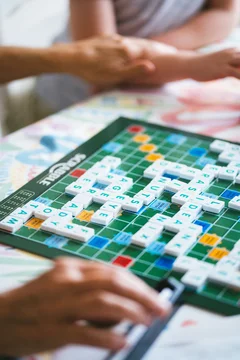
Several District of Delaware judges have discovery dispute procedures that require parties to first file a letter stating that the parties have met and conferred but are unable to resolve some disputes, and list the disputes.
This usually works out well, but a few issues can occasionally come up with this procedure. For example:
- One party refuses to meet-and-confer, forcing the other side to file solo.
- The parties have met and conferred to death, but one party refuses to sign the the joint letter anyway (or just refuses to respond), solely for the purpose of delay.
- One or more parties jump the gun, and insist on filing the letter before they have really bottomed out on the dispute.
Today we'll be talking about issue 3—one or more parties filing before they have finished working towards resolution.
What can you do when that happens? One option is to join the joint letter but include a statement that the parties have not fully met and conferred. That usually has no immediate effect, but sometimes you get something like what happened this week in SentriLock, LLC v. Carrier Fire & Security Americas Corporation, C.A. No. 20-520-MN (D. Del.).
There, the parties had a dispute about one party's objections to eighteen separate 30(b)(6) topics. They filed a somewhat lengthy letter describing the dispute. The objecting party included a statement asserting that the parties had not adequately met-and-conferred:
Carrier does not believe the parties have reached an impasse on any issue, but to the extent SentriLock’s request is heard, Carrier requests judicial attention as detailed below . . .
In response, the Court issued an oral order directing the parties to meet-and-confer for a minimum of 2 hours:
ORAL ORDER: The Court has reviewed the parties' discovery dispute letter at D.I. 131. The Court recognizes that it isn't in the parties' shoes, and so it can't know for sure if what it is about to say is correct. But having done this for a while, and having read the letter (including Defendant's view that the parties are not yet at an impasse), this sounds like a dispute where the parties have not yet tried hard enough to figure out what their respective problems are with the wording of the Rule 30(b)(6) topics at issue or with Defendant's purportedly "broad undefined concepts" to which it says its deponents will be prepared to respond. The Court is worried that if this is so, and all it does from here is set a briefing schedule and a date/time for a videoconference, then that videoconference could be a real waste of time, in that court resources will be expended to address an issue that could have been solved by the parties if they had just tried harder. Therefore, the Court ORDERS the following: By no later than January 12, 2024: (1) The parties shall have a verbal meet and confer involving lead and Delaware counsel for both sides on this issue. The meet and confer must last for at least two hours, unless agreement is reached as to all aspects of the dispute sooner than that.
The Court went on to explain exactly what the meet-and-confer should involve:
(2) During the meet and confer, the parties will go through, in great detail, the exact wording of each of the 18 Rule 30(b)(6) topics at issue and what their disputes are as to that topic. For example, the parties will start with Topic No. 2. Defendant will explain to Plaintiff why it is not prepared to put up a witness to talk about some aspect(s) of that topic as written. Plaintiff in turn will explain what it meant to get to with the disputed language in the topic that Defendant has a problem with. And from there, the parties will see if they can agree on some type of compromise to address both sides' concerns. Then the parties will move on to Topic No. 7, and repeat this process until they have discussed every one of the 18 disputed topics in that level of detail.
Finally, the Court gave the parties direction about what to do if they can't resolve the dispute:
(3) The parties will thereafter submit a joint letter to the Court, which indicates: (a) who participated in the meet and confer; (b) how long it lasted; and (c) the extent to which there are any remaining disputes about any of the topics that must be resolved. If there are any remaining disputes, the parties will list them, on a topic-by-topic basis. As to each disputed topic, the parties will each offer no more than one paragraph of explanation as to why their position is correct. The Court will thereafter resolve the disputes on the papers.
Two hours is a pretty long meet-and-confer, but with 18 topics to cover, that is only a bit over six and a half minutes per topic. The Court also put a relatively short deadline in place—four days to do the meet-and-confer and to file the new letter to the Court—which should compel the parties to waste little time and could result in resolution about as quickly as a regular discovery dispute.
This looks like an interesting new procedure, and one that could potentially apply to other types of disputes as well.
If you enjoyed this post, consider subscribing to receive free e-mail updates about new posts.






